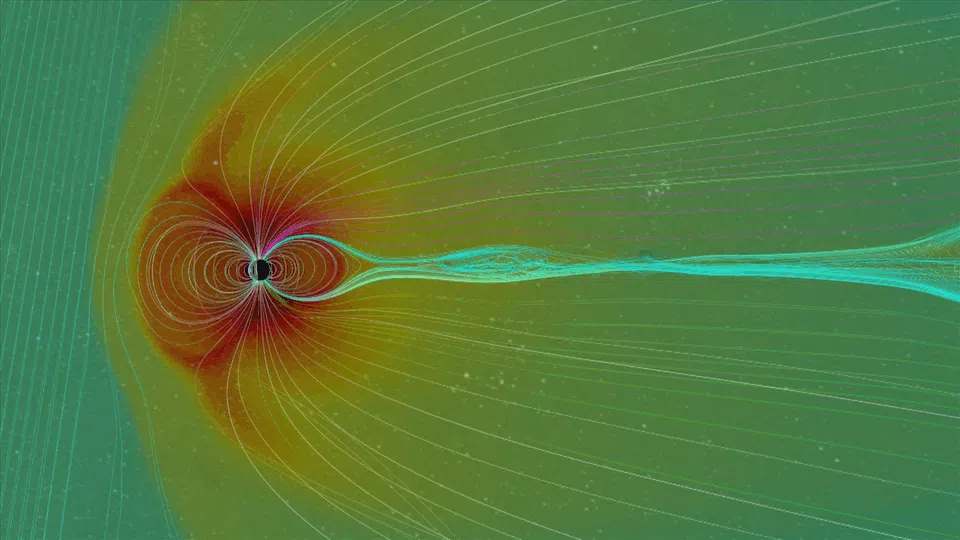What Would Happen If A Carrington Event-Sized CME Hit Us?

The idea of a massive solar flare, or more specifically, a Coronal Mass Ejection (CME) on the scale of the 1859 Carrington Event, hitting Earth often conjures up images of a global catastrophe: a world without power, communication, or modern comforts. The internet is rife with speculation, some of it painting a picture as dire as a "Gilligan's Island" scenario – "No phone, no lights, no motor car, not a single luxury." But what does science actually say about such a powerful geomagnetic storm and its potential impact on our 21st-century civilization?
Unpacking the Carrington Event: Myth vs. Reality
The 1859 Carrington Event was indeed a monumental solar storm, causing telegraph systems to fail, some even sparking fires, and producing auroras visible worldwide. This historical context fuels many fears. However, equating its impact then to a full-scale digital apocalypse today misses crucial distinctions and advancements.
One common misconception is that a Carrington-level event would act like an electromagnetic pulse (EMP) and fry all unshielded microchips. This is largely unfounded. Geomagnetic storms are not EMPs. They induce currents in very long conductors, not short electronic circuits. Your car's electronics, your smartphone, or your home appliances would likely remain unaffected, as their internal wiring is too short to accumulate significant induced currents.
So, if not our phones, what is at risk? The primary concern lies with vast, interconnected infrastructure:
- Power Grids: High-voltage transmission lines, stretching hundreds or thousands of miles, act as giant antennas for geomagnetic currents. These currents can overload and damage critical components like transformers. The 1989 Quebec blackout, caused by a solar storm roughly half the strength of the Carrington Event, serves as a stark reminder of this vulnerability.
- Pipelines: Long metal pipelines can also experience induced currents, potentially accelerating corrosion or interfering with monitoring equipment.
- Satellites: While terrestrial electronics are relatively safe, satellites, particularly those in Low Earth Orbit (LEO) like Starlink constellations, are more exposed to the increased radiation and atmospheric drag during a severe solar storm. A very strong event could indeed cause some to malfunction, require reboots, or even lead to de-orbiting due to increased atmospheric density.
Modern Preparedness and Mitigation
Fortunately, we're not entirely unprepared. Space weather agencies actively monitor the Sun. When a major flare or CME is detected, we typically have a warning period ranging from several hours to a few days before it impacts Earth. This crucial lead time allows for mitigation strategies.
Contingency plans are already in place globally. The most effective involves temporarily disconnecting high-voltage power lines across various countries. By taking transformers offline, we can prevent them from being exposed to damaging induced currents. While this would lead to widespread, but temporary, power outages, it's a controlled measure designed to save critical infrastructure from permanent damage.
Nuclear power plants, for instance, have robust failsafes. Critical electronics are often shielded, and mechanical systems are designed to automatically insert control rods, safely shutting down reactors in an emergency, preventing meltdowns.
The Magnetosphere: Our Shield
Our planet has a powerful natural defense: its magnetosphere. This magnetic field acts as a protective bubble, deflecting most of the charged particles from the Sun. A CME, even a powerful one, compresses and distorts this field, but Earth itself remains largely protected.
As described by NASA's GSFC Goddard Space Flight Center: "The red illustrates the higher density plasma that forms the magnetopause, the boundary between the magnetic influence of the sun and the Earth. The wind also forms a lower density magnetotail behind the Earth... A coronal mass ejection or CME can change things. The higher density plasma and stronger magnetic field, carried within the CME, strikes Earth's field and significantly alters the structure... Close to Earth, the magnetic field is largely unchanged. Earth is protected from the intense solar event."
While a Carrington-sized event would undoubtedly be a disruptive and challenging experience, leading to temporary blackouts and communication issues, it's not the end of modern civilization. With increasing scientific understanding, improved monitoring, and proactive mitigation strategies, humanity is far better equipped to face such a celestial challenge than ever before. It would be a test of resilience, but one we are designed to overcome.




